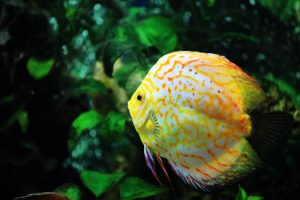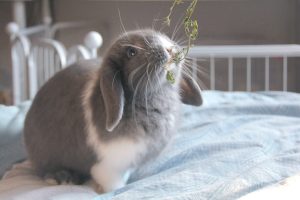(1) A cold
Myna is a resident bird in the south of the Yangtze River. It is easy to catch cold and catch a cold. It is more common in early spring and late autumn.
- Symptoms: When a bird has a cold, the bird has a runny nose, fluffy feathers, watery eyes, difficulty breathing, and cold feet.
- Prevention and treatment: Transfer the sick birds to a place with a higher temperature and raise them in a single cage. You can add an appropriate amount of wine or glucose to the drinking water, and drop a cold medicine into the mouth as appropriate for treatment. 2–3 mg of soil mold can be used. Supplements or drip feeding of chlortetracycline or antibiotics. For the sick birds, prepare the excrement around the hole, wipe it off with a cotton swab, and drop chloramphenicol eye drops or apply a little chlortetracycline ointment. The bird cannot take a bath during the disease period. You can chop the garlic, immerse it in drinking water, and drink it. Hey.
(2) Gastroenteritis
1 Gastroenteritis is one of the common diseases of myna and myna. The main reason is that birds eat spoiled food or drink extremely unclean sewage with feces. Sometimes the food in the food can is eaten up and it is not timely Supply, make the bird too hungry, and then eat and drink too much, which may also cause gastroenteritis. Due to poor warmth, the bird catches a cold, and it can also cause gastroenteritis.
2 Symptoms: Diarrhea, feces sticking to the conjunctiva with foul odor, head atrophy (i.e. pan head), loose feathers, obvious loss of appetite, sluggish action, and death in severe cases.
3 Prevention and treatment: When it is found that myna or myna has gastroenteritis, it should be treated in time, hang the bird cage in a quiet environment, let it rest, and drop a few drops of red wine in the drinking water. Take antibiotics orally, 1 day 2 Second, take 1/3—1/2 tablet each time. When feeding the medicine, the tablet can be stuffed into the body of worms and locusts to lure birds to nibble. If the sick bird has no ability to eat, take the bird out of the cage and feed it, or dissolve the tablet in a little water and then take it. Generally, the disease can be cured by taking the medicine continuously for 3-5 days. Supplement nutrition in time, add multi-vitamin glucose powder to the water tank. Feed more feed containing high protein and live food such as skin worms. The bird cage, water tank and habitat bar of birds with gastroenteritis should be thoroughly cleaned and disinfected before use. .
Due to the large and thin excrement of starlings, attention should be paid to the hygiene and freshness of their feed, and the drinking water should be changed frequently, so as not to contaminate the feces; and the food cans and perches should be washed frequently and kept clean, and the food should be fresh and irregular. Effectively prevent the occurrence of starling gastroenteritis.
(3) Toe off
- Causes and symptoms: Myna is a bird that loves cleaning very much. In the state of free life, they need to bathe often. But under the condition of artificial breeding, because the bird cage is not cleaned in the long summer, the tartaric acid bars are stuck with feces and dirt. Some birds’ feet are also covered with feces, causing the toe joints of birds to be red, swollen, inflamed, and necrotic and phalanx to fall off, and the phalanges will not regenerate.
2 Prevention: When the toe joints of the starlings are found to be red and swollen (the bottom of the toes becomes thick and “yellow” at the beginning), the bird cage should be cleaned immediately, especially the perch bar and water tank. Use potassium permanganate or salt water to remove the bird’s feet Then apply anti-inflammatory lotion or iodine. If you find a thick vesicular mass, you can use a three-edged needle or scalpel to release pus and blood, and then apply anti-inflammatory ointment.
(4) caudate pancreatitis
Starlings are prone to caudate pancreatitis, commonly known as “Shenghuang” or “Pipe”
1 Cause: The caudal gland can secrete oil. When birds comb their feathers, they often use their beaks to pick up these secretions to smear the feathers to make them shiny, moist and impermeable. At the same time, the secretions of the caudal glands contain ergosterol, which is a The ultraviolet action of sunlight produces vitamin D, which is absorbed by the skin and enters the body, which is the main source of vitamin D for birds. Long-term neglect of feathers in birds can also lead to blockage and inflammation of the tail glands.
2 Symptoms: listlessness, loose feathers, little movement of the head, and little eating. The root of the tail feathers on the dorsal side of the affected area is red and swollen, and a bean-shaped bulge appears. The redness and swelling are hard at first, but later become soft, with yellow-white pus-like secretions. .
3 Prevention and treatment: First, disinfect the caudal gland with iodine, or wash the affected area with 0.1-0.5% potassium permanganate solution several times a day. Mild cases will heal in a few days. In severe cases, surgery should be performed, that is, the affected area should be disinfected with alcohol or iodine, and then the tip of the caudal gland should be cut with a sterile needle, the pus blocked in the gland should be squeezed out, and then iodine should be applied. Put the bird in a quiet place and stop drinking water for 2 hours. You can also add 1/3 of erythromycin, tetracycline, spiramycin and other tablets to the drinking water, grind it into powder and dissolve it in drinking water, and take it for 5-7 days. Note that the water bath is suspended during treatment.
The cause of this disease is related to the lack of water baths for birds, unfortunately humid and sultry air, and turbid air. Mosquito bites and local infection of the tail can also cause this disease to occur. Therefore, strict hygiene management should be taken during prevention, and attention should be paid to strengthening disinfection and unfortunately ventilation. In summer, it is necessary to prevent the birds from being heated, take a water bath every day, strengthen nutrition and supply sufficient clean water.







